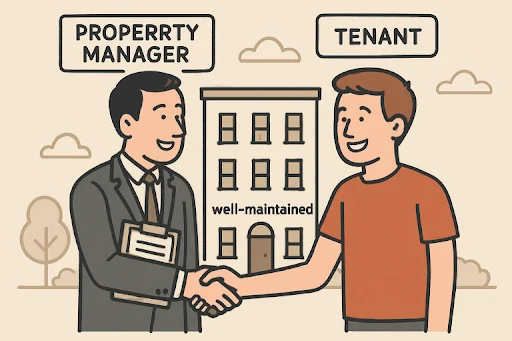BUSINESS
Top Risk Management Issues and How to Prevent Them

Risk management is an essential component of any robust business strategy, albeit one that frequently poses many challenges capable of substantially influencing an organization’s operations and financial performance. In the contemporary dynamic and interconnected business environment, enterprises encounter diverse risks, spanning from cybersecurity vulnerabilities to regulatory compliance concerns.
The identification of these risks and the deployment of efficacious preventative measures are imperative to guarantee uninterrupted business operations and mitigate potential financial and reputational repercussions. Engage with the professionals at Managed IT Services Vermont to mitigate the significant risk management challenges in business.
In this article, we will explore effective risk management solutions for risk management problems.
Top 8 Challenges of Risk Management and Their Solutions
1. Lack of Risk Awareness
Lack of risk awareness is a common issue that can have significant implications for businesses. Failing to understand and identify potential risks can leave organizations vulnerable to various threats that could impact their operations, finances, and reputation.
To prevent this, businesses need to implement robust risk management processes that include regular risk assessments, scenario planning, and the establishment of clear risk mitigation strategies. By enhancing risk awareness among employees at all levels of the organization and fostering a culture of proactive risk management, businesses can effectively identify, assess, and address potential risks before they escalate into serious issues.
2. Inadequate Risk Identification
Inadequate risk identification is a critical issue that can significantly impact an organization’s ability to manage risks effectively. Without a thorough understanding of potential risks, businesses may be caught off guard when unexpected events occur, leading to financial losses and damaging their reputation.
Organizations must implement robust risk identification processes that systematically identify, analyze, and evaluate risks across all business areas to prevent this. This can include conducting risk assessments, engaging with stakeholders, and utilizing risk management tools and techniques to identify and appropriately address all potential risks.
3. Poor Risk Assessment
Effective risk management starts with a thorough risk assessment process. It is crucial to identify and evaluate potential risks that could impact your business. Poor risk assessment can lead to overlooking critical threats or underestimating their potential impact, leaving your organization vulnerable to unforeseen crises.
To prevent this, consider implementing a structured approach to risk assessment, utilizing tools such as risk matrices, scenario analyses, and historical data to help you accurately identify, analyze, and prioritize risks. By conducting regular and comprehensive risk assessments, you can proactively address vulnerabilities, develop mitigation strategies, and enhance your overall risk management framework.
4. Insufficient Resources for Risk Management
More resources for risk management can pose significant challenges to organizations. Businesses must allocate adequate resources, both in terms of personnel and finances, to effectively identify, assess, and mitigate risks. With sufficient resources dedicated to risk management, organizations may be able to implement comprehensive risk mitigation strategies, leaving them vulnerable to potential threats.
To prevent this issue, companies should prioritize risk management as a core aspect of their operations and ensure they have the expertise and tools to address and manage risks proactively. By investing in robust risk management practices, organizations can safeguard their reputation, assets, and long-term sustainability.
5. Ineffective Risk Mitigation Strategies
Ineffective risk mitigation strategies can pose significant challenges to businesses, making it crucial for organizations to identify and address them promptly. One common issue is the reliance on outdated risk assessment methods that may not accurately capture the evolving risks faced by the organization.
To prevent this, companies should regularly review and update their risk management processes to align with industry standards and best practices. Furthermore, adequate communication and collaboration among key stakeholders can help practical risk mitigation efforts. Establishing clear lines of communication, defining roles and responsibilities, and fostering a culture of transparency are essential steps in preventing ineffective risk management strategies from undermining the organization’s resilience against potential threats.
6. Over Reliance on Risk Transfer
Over Reliance on risk transfer is a common issue in risk management that can have severe consequences for businesses. While transferring risk through insurance or contracts can be an effective strategy, relying solely on this method may result in overlooking potential hazards that could significantly impact the organization.
To prevent this issue, businesses must adopt a comprehensive approach to risk management that includes proactively identifying, assessing, and mitigating risks. By diversifying risk management strategies and considering various risk transfer options, along with other preventive measures, businesses can better protect themselves from unforeseen events and maintain resilience in the face of challenges.
7. Silos in Risk Management
Silos in risk management can present significant challenges for organizations aiming to manage risks across departments or business units effectively. When different departments operate in isolation, it can lead to fragmented risk strategies and hinder the organization’s ability to identify and address potential threats comprehensively.
To prevent silos in risk management, organizations should prioritize open communication channels, encourage collaboration between departments, and implement integrated risk management systems that provide a holistic view of risks across the organization. By breaking down silos and fostering a culture of shared responsibility for risk management, organizations can enhance their ability to mitigate risks and safeguard their operations proactively.
8. Failure to Monitor and Review Risks
Failure to monitor and review risks is a critical risk management issue that organizations must address to mitigate potential threats effectively. Regular monitoring and review processes are essential for identifying new risks, assessing the impact of existing ones, and ensuring that risk mitigation strategies remain relevant and practical. With proper monitoring and review mechanisms, organizations may recognize emerging risks and adapt their risk management approach to changing circumstances.
To prevent this issue, companies should establish clear protocols for ongoing risk assessment, implement robust reporting mechanisms, and regularly evaluate the effectiveness of their risk management strategies. By prioritizing consistent monitoring and review of risks, organizations can proactively identify and address potential threats before they escalate into significant challenges.
Final Thoughts
Effective risk management is essential to protect organizational goals and objectives from pitfalls. Through proactive identification, assessment, and mitigation of risks, businesses can minimize disruptions and capitalize on opportunities for success. Critical preventive measures include establishing robust risk management frameworks, cultivating a culture of risk awareness and accountability, utilizing technology for risk monitoring and analysis, and fostering open communication channels throughout the organization. By prioritizing risk management and implementing preventive strategies, businesses can navigate uncertainties with resilience and achieve sustainable long-term growth. For more information, contact the IT Consulting Vermont team.
REAL ESTATE
Effective Strategies for Residential Property Management Success

Key Takeaways
- Consistent tenant screening ensures reliable occupants.
- Regular property maintenance preserves value and tenant satisfaction.
- Leveraging technology streamlines operations and communication.
- Clear financial management practices protect margins and ensure compliance.
Achieving success in residential property management requires a comprehensive approach that blends strategy, communication, and ongoing care. Property managers who excel focus on both operational efficiency and creating an outstanding tenant experience. Implementing proven strategies can help raise tenant satisfaction, minimize vacancies, and maximize property returns for owners and investors.
From thorough tenant screening to adopting modern technology, there are numerous ways to enhance the business of managing residential rentals. By proactively maintaining properties and establishing clear processes for both staff and tenants, residential property management teams lay the foundation for long-term success in a competitive marketplace.
Incorporating sustainability initiatives and prioritizing community engagement further amplifies property value and tenant loyalty. With proper planning and continuous learning, property managers can stay ahead of industry trends and deliver meaningful results.
Comprehensive Tenant Screening
Careful tenant selection is the cornerstone of any successful property management strategy. Screening should extend beyond simple references—thorough background checks, credit history evaluations, and rental history evaluations all play crucial roles. Utilizing online screening tools and third-party verification services can reduce potential risks and minimize bias. The ultimate goal is to ensure that tenants are financially responsible, reliable, and have a history of respectful residency. Effective screening can also minimize turnover and late payments, safeguarding property revenue streams. Additionally, proactive property maintenance ensures that units remain in excellent condition, supporting tenant satisfaction and long-term occupancy. Combining thorough tenant screening with regular property upkeep creates a stable, profitable rental environment for both owners and tenants.
Proactive Property Maintenance
Preventive maintenance is crucial for maintaining property value and ensuring tenant satisfaction. A proactive approach means regular inspections, seasonal tune-ups, and prompt attention to repairs before they escalate. Integrating technology-driven maintenance tracking systems can simplify scheduling and help managers stay ahead of issues like HVAC problems, plumbing leaks, or structural wear and tear. Tenants are more likely to renew their leases when maintenance requests are handled promptly, and routine checks ensure common areas are kept in top condition. Property value is preserved, and repair costs are often lower when issues are caught early.
Leveraging Technology
Modern property management software is revolutionizing the industry by automating repetitive tasks and streamlining daily operations. Online payment portals facilitate faster rent collection, digital communication channels keep tenants informed and engaged, and cloud-based work order systems ensure maintenance tasks are resolved efficiently. Virtual tours and online leasing applications can also expand your reach to qualified tenants who are tech-oriented and value convenience. Leveraging technology enables property managers to respond more quickly, reduce paperwork, and minimize errors across all aspects of their operations.
Clear Financial Management
Accurate and transparent financial practices form the backbone of effective property management. Detailed recordkeeping, monthly bank reconciliations, and robust audit trails help protect owners’ margins and ensure regulatory compliance. Transparent financial reporting enables property owners to monitor performance and adjust their strategies as needed. Utilizing specialized property management accounting platforms can ease tax preparation, track expenses, and provide actionable insights into profitability. Managers who communicate clearly about deposits, rent increases, and common-area charges also build trust and prevent disputes.
Effective Communication Channels
Open, responsive communication is essential for healthy tenant relationships. Establishing a resident portal enables tenants to easily submit maintenance requests and access important information, while automated notifications keep them updated on upcoming repairs, inspections, and community events. These tools foster trust and satisfaction, giving tenants confidence that their concerns will be swiftly addressed. Clear communication policies also help staff stay organized and minimize misunderstandings in day-to-day operations.
Implementing Sustainable Practices
Eco-friendly property management attracts environmentally conscious tenants and reduces long-term operational costs. Simple upgrades—such as installing energy-efficient appliances, switching to LED lighting, and introducing comprehensive recycling programs—can make a big difference. Encouraging responsible energy and water use through tenant education and incentives also supports sustainability goals. By reducing their environmental footprint, property managers increase a property’s market appeal and future-proof their investments.
Building Community Engagement
Fostering a sense of community within your properties can significantly enhance tenant retention and create a positive living environment. Hosting resident events—such as holiday gatherings, volunteer opportunities, or informational seminars—breaks down barriers and builds rapport among neighbors. Developing shared amenities, such as fitness centers, lounges, or outdoor spaces, encourages residents to connect, feel a sense of belonging, and invest emotionally in their home. Community engagement often leads to fewer vacancies and more lease renewals.
Continuous Staff Training
Ongoing professional development is crucial for property management staff to stay current with industry best practices and regulatory requirements. Continuous training ensures that the team stays up-to-date on legal changes, customer service techniques, and new technologies. Workshops, certifications, and industry conferences can all contribute to a staff’s effectiveness, ultimately leading to higher tenant satisfaction and improved property performance. Well-trained employees are also more motivated and adept at solving problems quickly and professionally.
Adopting these strategies ensures operational excellence in residential property management, elevates the tenant experience, and safeguards property investments for the long term.
BUSINESS
Why Quality Should Be Your Priority in CC Shops

In the digital era, CC shops—platforms that facilitate the buying and selling of credit card (CC) information—have grown into a significant aspect of online commerce. However, with this growth comes a crucial decision ultshop for users and vendors alike: whether to prioritize quantity or quality. While the temptation to focus on sheer volume is understandable, quality should always take precedence. Choosing quality CCs is not just about avoiding losses; it’s about building trust, ensuring security, and sustaining long-term success. This article explores why quality should be your top priority in CC shops and the benefits it offers.
Understanding the Concept of Quality in CC Shops
Quality in CC shops refers to the reliability, authenticity, and usability of credit card information. High-quality CCs are verified, have low fraud risk, and are supported by legitimate financial institutions. They allow for smoother transactions, reduce the likelihood of chargebacks, and minimize the risk of getting flagged for suspicious activity.
In contrast, low-quality or unverified CCs often come with risks such as expired data, unauthorized use, or errors in transaction processing. These CCs may seem appealing due to lower costs or availability, but they often lead to financial loss and reputational damage. In the world of CC shops, the principle of “you get what you pay for” is particularly true.
Security and Fraud Prevention
One of the most important reasons to prioritize quality in CC shops is security. Fraud is rampant in digital transactions, and low-quality credit cards increase the risk of unauthorized activity. High-quality CCs, however, come with verification protocols and monitoring systems that safeguard both buyers and vendors.
Using verified and reliable cards protects your operations from potential fraud, reduces the risk of chargebacks, and ensures that transactions are legitimate. By focusing on quality, you create a secure environment that safeguards your financial interests and the trust of those you do business with.
Building a Positive Reputation
Reputation is everything in the digital credit card marketplace. Vendors who prioritize quality over quantity are viewed as trustworthy, responsible, and professional. Customers are more likely to return to a seller known for providing high-quality CCs, while businesses that focus on low-quality or unverified cards risk being flagged as unreliable or fraudulent.
A strong reputation built on quality leads to long-term relationships with customers and other vendors. In competitive markets, this trust is invaluable—it encourages repeat business, positive reviews, and word-of-mouth referrals, all of which contribute to sustainable success.
Minimizing Financial Risks
Using low-quality CCs can lead to significant financial losses. Failed transactions, chargebacks, and blocked accounts ultshop.mobi are common consequences when dealing with unverified or fraudulent credit cards. Each failed transaction represents not only a lost opportunity but also potential fees and complications for the user or vendor.
High-quality CCs, on the other hand, are verified and less likely to trigger issues during processing. This reduces financial risks and ensures smoother operations, allowing users to focus on growth and efficiency rather than constantly managing problems caused by poor-quality cards.
Enhancing Transaction Efficiency
Quality credit cards facilitate faster, smoother, and more reliable transactions. Verified CCs are compatible with secure payment gateways and often come with features that prevent errors or interruptions during processing. This efficiency benefits both the buyer and the seller, ensuring that transactions are completed without delay or complication.
In CC shops where speed and reliability are valued, focusing on quality can enhance user experience and maintain operational consistency. Customers are more likely to engage with vendors who provide seamless transactions, reinforcing loyalty and trust.
Legal and Ethical Considerations
Prioritizing quality is not only a matter of security but also of legality and ethics. High-quality CCs come from legitimate sources and are typically verified for authorized use. Using or selling low-quality, unverified, or stolen credit card information can expose vendors and buyers to criminal liability and legal repercussions.
By focusing on quality, you operate within legal and ethical boundaries, which strengthens your credibility in the market. Vendors and users who respect legal frameworks are more likely to develop sustainable operations and avoid the significant risks associated with illicit activities.
Long-Term Sustainability
Focusing on quantity over quality may provide short-term gains, but it is rarely sustainable. Low-quality CCs increase the likelihood of disputes, blocked accounts, and financial loss, which can jeopardize your ability to continue operations.
Quality, however, ensures long-term stability. Verified and reliable CCs reduce operational risks, minimize disputes, and maintain the trust of customers and partners. For anyone seeking sustainable success in CC shops, quality is the foundation on which long-term growth is built.
Differentiation in a Crowded Market
The CC shop ecosystem is competitive, with numerous vendors offering similar products. In such a market, quality becomes a key differentiator. Vendors who focus on providing verified, high-quality CCs stand out as reliable and professional, while those who prioritize quantity risk being overlooked or labeled untrustworthy.
Platforms that emphasize quality, such as UltShop, illustrate how prioritizing verified and reliable credit cards can create a competitive edge. Customers and partners gravitate toward platforms known for high standards, ensuring repeat business and positive market recognition.
Encouraging Responsible Practices
Prioritizing quality fosters responsible practices among both buyers and vendors. High-quality CCs encourage careful verification, secure handling of information, and ethical behavior in transactions. This responsible approach reduces the prevalence of fraud, promotes accountability, and contributes to a safer online credit card ecosystem overall.
By setting a standard for quality, vendors can influence the behavior of others in the market, promoting higher standards and reducing the risks associated with low-quality CCs.
Conclusion
Quality should always be your priority in CC shops. While the allure of quantity may seem tempting, focusing on high-quality, verified credit cards ensures security, enhances reputation, minimizes financial risks, and fosters long-term sustainability. High-quality CCs provide reliable, efficient transactions, demonstrate professionalism, and encourage ethical behavior.
In an increasingly competitive and high-risk environment, quality acts as a safeguard and a differentiator. Vendors and buyers who prioritize quality build trust, establish credibility, and position themselves for long-term success. Platforms like UltShop exemplify this approach, showing that prioritizing quality over quantity is not just a strategy—it is the cornerstone of a responsible and prosperous digital marketplace.
Ultimately, choosing quality CCs is about more than completing transactions—it’s about protecting your reputation, maintaining ethical standards, and ensuring a sustainable path forward in the complex world of CC shops.
BUSINESS
How to Choose the Best Movers in Montreal: 7 Essential Criteria

A great group of Déménageurs Montréal can make the difference between a smooth and friendly move or a nightmare of an experience where your furniture is lost, broken, or worst of all insured for pennies on the dollar. Movers Montreal Whether you are moving locally in the city or preparing for a long distance move, hiring reputable Movers in Montreal is one of the best decisions you will make. From the high-rise apartments in downtown to the quiet, suburban streets of its boroughs, Montreal’s neighborhoods are all unique and present their own challenges in which apartment locators should be experienced renters. This guide features seven key guidelines that will help you in making an informed decision in choosing the right Moving Services for you.
1. Check Licensing, Insurance, and Legal Compliance
When you are making a choice of reliable Movers in Montreal – make sure the first step is checking their license and insurance. Any reputable moving companies doing business in Quebec need to be registered with the “Commission des transports du Québec (CTQ)” and abide by the laws of the province. Movit is also reputable movers for Toronto that provide liability coverage to your stuff, so you have a reassurance that your belongings would be safe anyways. When you are researching companies to work with for Moving Montreal, be sure that they can provide you with proof of their general liability insurance as well as their cargo protection. This protects your stuff and also the company’s transparency and professionalism.
2. Evaluate Experience and Local Expertise
A mover’s experience is one of the best predictors of trustworthiness. Montreal is a city of singular diversity that has its fair share of deserted streets and alleys, steep staircases and heritage buildings — all making the transit process harder. Picking Movers Montreal who are familiar with these local situations will make your move a lot faster and easier. Find companies that have been around for a while, with hundreds of moves under their belt and smart residential and commercial Move Work. Professional movers are experienced in moving fragile items, maneuvering through busy cities, and dealing with less than ideal loading circumstances – this all adds up to peace of mind for you.
3. Review Customer Feedback and Online Reputation
Google Reviews, social sites and consumer websites are also helpful to gain a read on how a company is doing. If you are assessing your options for Moving in Montreal, take a moment to browse through customer feedback related to aspects like punctuality, professionalism, and overall customer-service. Be sure to listen for how businesses handle negative feedback; this will give insight into their commitment to customer service. The best Movers in Montreal always maintain trustworthy work ethic as well as a tendency to communicate effectively and handle every client’s belongings with respect. You can even direct to the company for testimonials whom you want take their services.
4. Compare Pricing, Quotes, and Service Transparency
Affordable and trustworthy movers in Montreal provide you with upfront moving quotes, without any hidden fees. When you’re collecting estimates, the other thing you should do is request for an itemized list of everything fees — including travel time, packing supplies, handling large or bulky items and additional services. Price shouldn’t be the only deciding factor, but transparent pricing is a must. Beware of too low quotes though — they can signal inexperience, or hidden costs. Rather than just one, get multiple free quotes from 3-5 Movers in Montreal so that you can make a more informed decision when selecting an affordable moving company, while still retaining the very best service possible.
5. Evaluate the Range of Moving Services Offered
Every move is different. Some clients want everything done for them, others just need to be carried. Prior to deciding upon a service of Moving in Montreal, verify which are the services which are part of their bundle. Some long-distance companies offer packing and unpacking, furniture disassembly and reassembly, as well as storage for between homes and specialty options such as handling of a piano or taking care of an antique. Services de déménagement And Their Offerings, The broader range of services you have access to the more it is possible for your move to be tailored to your personalized requirements. A business that is able to accommodate any last minute changes, or special requests, in my opinion is demonstrating flexibility, efficiency and superior customer service.”.
6. Inspect Equipment, Vehicles, and Safety Standards
A reputable moving company will also have clean reliable trucks, good packing supplies, and the right equipment including dollies, straps, and blankets. Regarding Movers in Montreal, find out about what kind of vehicles they have and how your goods will be protected while on the road. Professional services teams are all forced by their companies to practice safe protocols, use the right tools for the job, and adhere to proper lifting methods prevent damage. Nice and tidy equipment generally says something about the professionalism and quality of the company.
7. Assess Communication and Customer Support
Good communication is another major component for a successful move that remains free of stress. Quality moving service providers offer good customer support and a written estimate, and allow you an open channel for communication with all concerned parties during the move. While you’re in the process of comparing Moving in Montreal, it can be good to gauge response times as well as how well they answer questions. Good movers will go over timelines, specific details you may have, potential obstacles and more in the hopes that you will stay relaxed and prepared on moving day.
Final Thoughts
Finding the perfect Movers in Montreal demands extensive investigation and comparison. With consideration to licensure, experience, reputation, pricing, services offered, equipment and communication you can confidently choose a company for a stress-free transition to your new home. No matter if you are transitioning across the town, or to another province, when you choose the best team for Déménageurs Montréal, your stuffs will always be treated and taken care of with professionalism.

 LIFESTYLE9 months ago
LIFESTYLE9 months agoThe Disciplinary Wives Club: Spanking for Love, Not Punishment

 ENTERTAINMENT1 month ago
ENTERTAINMENT1 month agoExploring the Kristen Archives: A Treasure Trove of Erotica and More

 BUSINESS9 months ago
BUSINESS9 months agoBrand Visibility with Imprint Now and Custom Poly Mailers

 HEALTH8 months ago
HEALTH8 months agoHappy Hippo Kratom Reviews: Read Before You Buy!

 HOME IMPROVEMENT9 months ago
HOME IMPROVEMENT9 months agoThe Do’s and Don’ts of Renting Rubbish Bins for Your Next Renovation

 TECHNOLOGY8 months ago
TECHNOLOGY8 months agoDizipal 608: The Tech Revolution Redefined

 GENERAL5 months ago
GENERAL5 months ago5 Factors That Affect Tattoo Removal Success

 BUSINESS10 months ago
BUSINESS10 months agoExploring the Benefits of Commercial Printing












